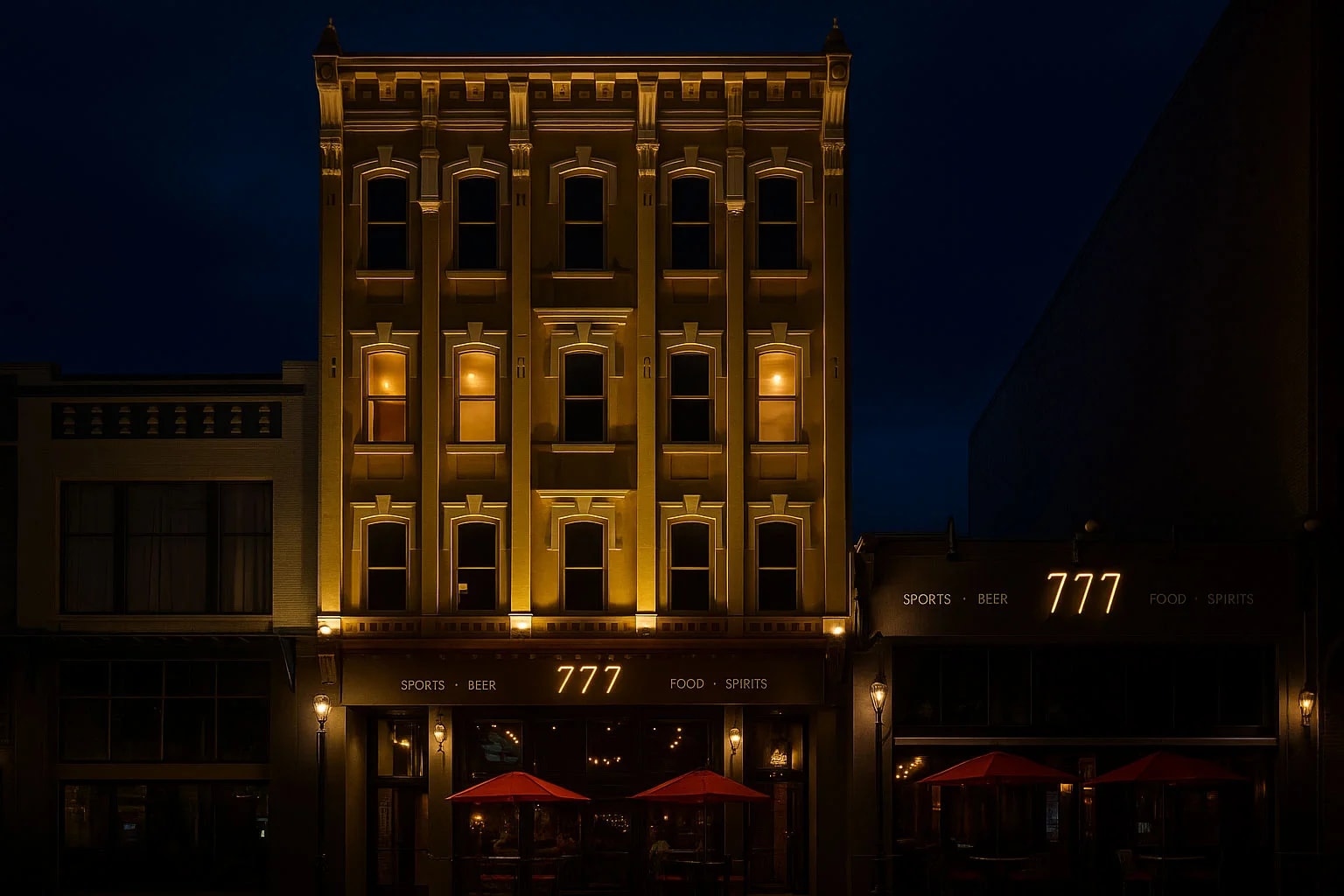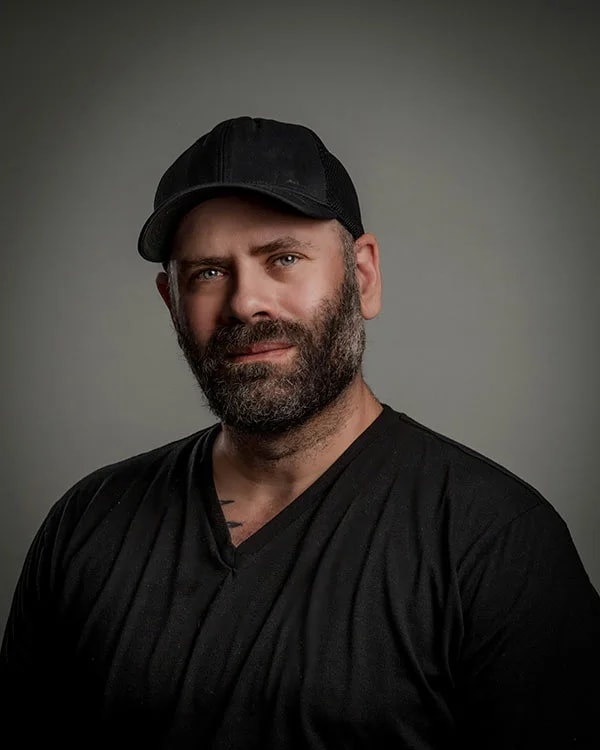The Montijo Building sits among the restored Victorian structures of the Gaslamp Quarter, its elegant facade hiding a history steeped in death. While most visitors see only another beautifully preserved historic building, those who know its past understand why this location is considered one of downtown San Diego's most haunted.
Gray & Company Furniture Store occupied this building for decades, selling household furnishings to San Diego's growing population. But like many furniture makers of the era, they also constructed and sold coffins—a logical business extension when woodworking skills were needed for both the furniture of life and the final resting boxes of death.
The building's basement, hidden from the shopping public upstairs, served as a morgue where bodies were prepared for burial, autopsies were performed, and the grim business of death was conducted. Then in 1903, Edward Tebbutt added his own tragic chapter to the building's dark history, choosing this place to end his life in a moment of desperation that seems to echo through the building still.
The History of the Montijo Building
The Montijo Building was constructed in the late 1800s during San Diego's boom period when Alonzo Horton's New Town development was transforming the waterfront area into a commercial district. The building was designed for commercial use, with retail space on the ground floor and offices or residential space above.
Gray & Company Furniture Store established itself in the building, becoming one of San Diego's premier furniture retailers. The store sold everything needed to furnish a Victorian home—parlor sets, bedroom suites, dining tables, and kitchen furniture. But they also maintained a side business that modern shoppers might find disturbing: coffin manufacturing and sales.
In the 19th and early 20th centuries, furniture makers commonly built coffins. The skills were similar, the materials were the same, and every community needed both furniture and coffins. Gray & Company displayed their coffins alongside bedroom sets, and customers shopping for a new table might find themselves browsing casket options for elderly relatives.
The basement served as a workshop and storage area, but it also functioned as an unofficial morgue and preparation room. In an era before modern funeral homes, bodies were often brought to furniture stores for measurement, preparation, and placement in coffins. Gray & Company performed these services, and their basement witnessed the preparation of countless deceased San Diego residents for burial.
Autopsies and Embalming
The basement of the Montijo Building was also used for autopsies and embalming—grim necessities in a growing city. When deaths occurred under suspicious circumstances, or when bodies needed to be preserved for transportation or delayed burial, they were brought to the Montijo Building's basement.
The basement was equipped with tables for body preparation, storage for embalming chemicals, and drainage systems to handle the fluids involved in the process. The work was performed by undertakers who operated from the building, providing services that wouldn't be centralized in formal funeral homes for several more decades.
The number of bodies that passed through this basement over the decades is unknown, but given San Diego's population growth and the building's long use for these purposes, it was surely hundreds if not thousands. Each body brought its own story of life and death, and believers in the paranormal suggest that such concentrated exposure to death left a spiritual residue that continues to manifest.
Edward Tebbutt's Tragedy
In 1903, the Montijo Building became the scene of a tragedy that added a layer of personal despair to its history of commercial death. Edward Tebbutt, a man struggling with personal and financial problems, entered the building and took his own life.
The details of Tebbutt's suicide are sparse—newspaper accounts from the era were often vague about such matters, considering them private family tragedies not suitable for extensive public discussion. What is known is that Tebbutt's death was violent and desperate, the act of a man who saw no other escape from his troubles.
Tebbutt's suicide seemed to mark a turning point in the building's reputation. After his death, employees and visitors began reporting strange occurrences—sounds, shadows, and an overwhelming sense of sadness and desperation that seemed to emanate from the walls themselves.
The Spirits of the Montijo Building
The Montijo Building is considered one of San Diego's most actively haunted locations, with multiple spirits and intense paranormal activity.
The Ghost of Edward Tebbutt
The most commonly reported spirit in the Montijo Building is believed to be Edward Tebbutt. Employees and visitors describe seeing a male figure who appears deeply distressed, his posture suggesting despair and hopelessness. The figure is most commonly seen in areas connected to Tebbutt's suicide, appearing and disappearing without warning.
Witnesses report feeling overwhelming sadness and desperation in certain areas of the building—emotions so intense they bring some people to tears. This emotional residue is strongest in locations associated with Tebbutt's death, suggesting his final moments left a permanent imprint on the space.
Some psychics and paranormal investigators who have visited the building report making contact with Tebbutt's spirit. They describe a man still trapped in the moment of his death, unable to move on because of the intensity of his final emotional state. He seems confused about his situation, occasionally reaching out to the living as if seeking help or understanding.
Employees working late report hearing sounds associated with Tebbutt's death—thuds, crashes, and anguished cries coming from empty areas. Some refuse to work alone in the building, particularly at night, due to the overwhelming sense of distress and desperation that permeates certain spaces.
The Spirits of the Basement
The basement, with its history as a morgue and preparation room, is considered the most haunted area of the Montijo Building. Employees report feeling watched when descending the stairs, as if unseen eyes are tracking their movements. The atmosphere is described as heavy and oppressive, difficult to breathe, as if the air itself is saturated with death.
Shadow figures are commonly seen moving through the basement, darting between storage areas and disappearing into walls. Some believe these are the spirits of individuals whose bodies were prepared here—confused souls who don't understand why they're in this dark place or how to leave.
The smell of chemicals—specifically formaldehyde and other embalming fluids—is occasionally reported in the basement despite no such materials being present in the building for decades. The scent appears suddenly, overwhelming and unmistakable, then fades just as quickly.
Some witnesses report hearing the sounds of work being performed—metal instruments clanking, water running, and voices discussing procedures in hushed tones. When investigated, the basement is always empty and silent, the sounds ceasing as soon as someone enters.
The Coffin Showroom Spirits
In areas that once served as Gray & Company's showroom, employees report seeing Victorian-era shoppers browsing merchandise that no longer exists. These apparitions appear solid and real, dressed in period clothing, examining items with the serious attention of people making important purchases.
Some witnesses report seeing specifically a woman in black mourning dress, moving slowly through the space as if selecting a coffin for a deceased loved one. Her grief is palpable—witnesses describe feeling overwhelming sorrow when this spirit is present. She never acknowledges the living, focused entirely on her sad task, before fading away.
The sound of coffin lids opening and closing is reported in empty areas, as if invisible customers are examining the wares. Display furniture moves slightly overnight, rearranging itself into configurations seen in old photographs of the original store layout.
Visit the Montijo Building
The Montijo Building is located in San Diego's Gaslamp Quarter and houses commercial businesses. The building's exterior can be viewed from the street as part of the historic Gaslamp walking experience.
Our Ghosts of San Diego Tour stops at the Montijo Building to share its dark history of coffin sales, autopsies, embalming, and Edward Tebbutt's tragic suicide. Our guides explain why buildings connected to death and tragedy often become sites of intense paranormal activity.
Join our Ghosts of San Diego Tour to learn about the Montijo Building's haunted history and discover why places where death was a daily business never quite shake the presence of those who passed through on their way to the grave.

